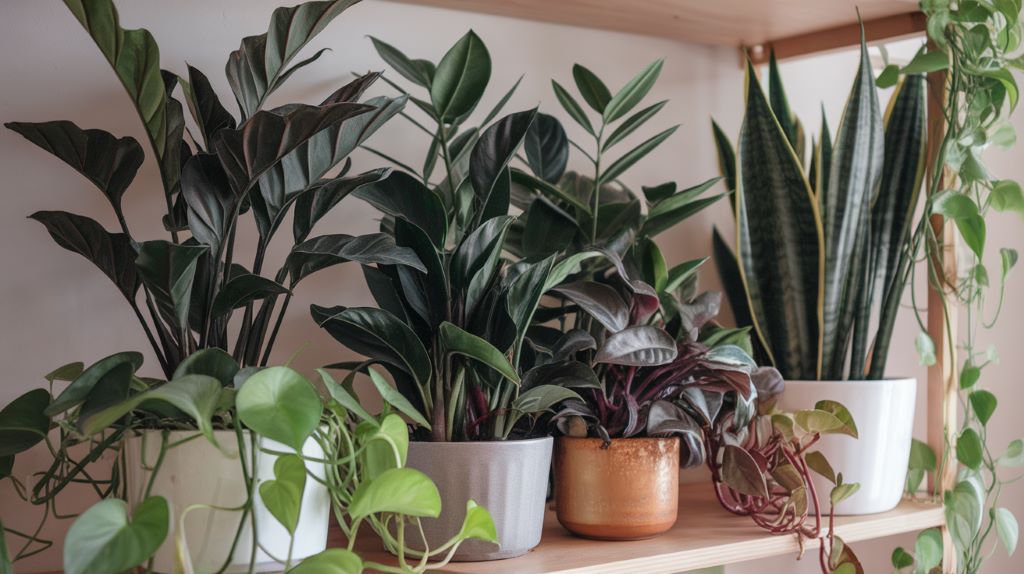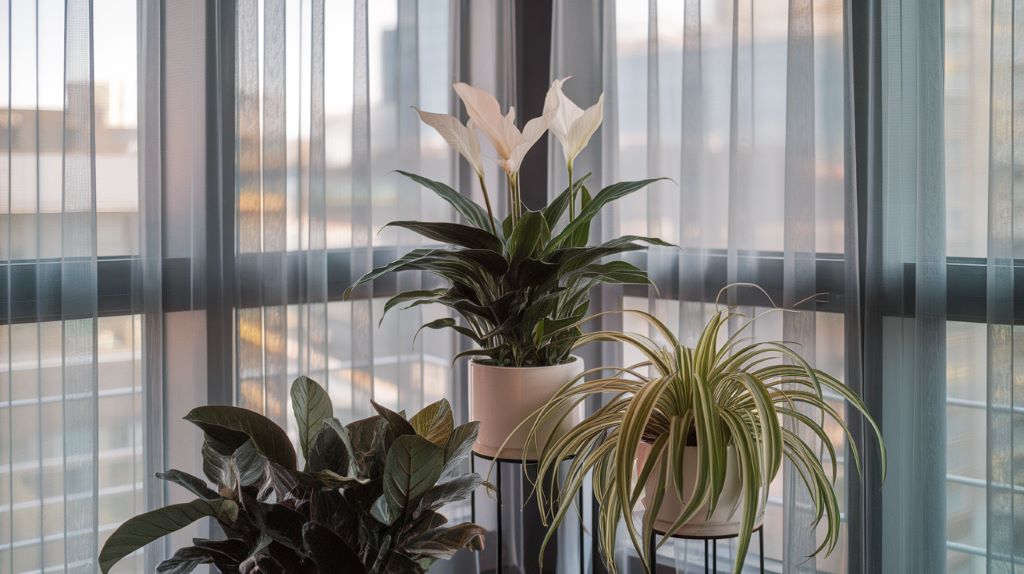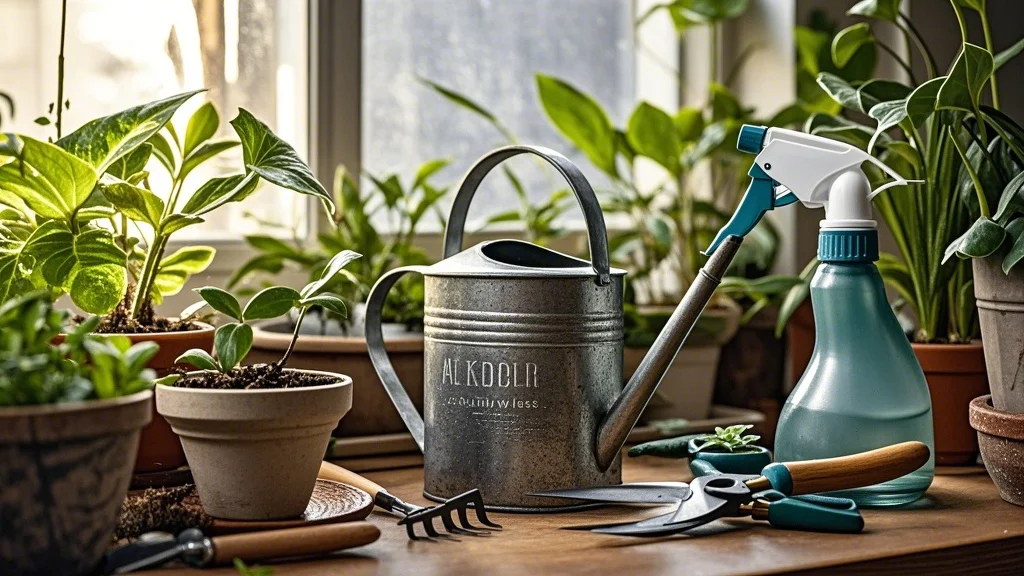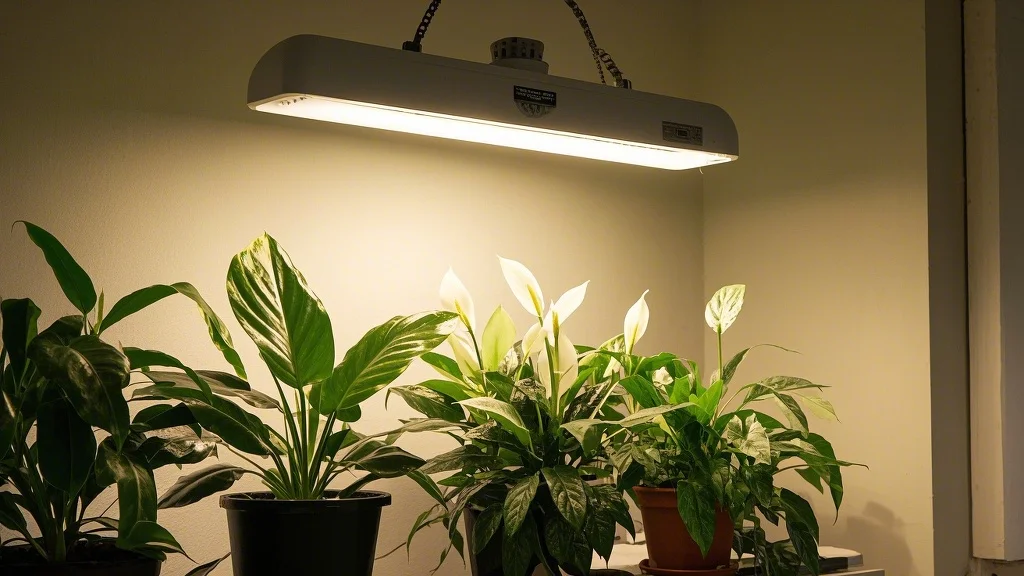The world of indoor gardening is filled with well-meaning advice, but not all of it stands up to scrutiny. For urban dwellers with limited natural light, separating fact from fiction becomes crucial for plant success. Many so-called “low light plants” struggle silently in dark corners, victims of persistent myths about their light requirements. This article cuts through the misinformation to reveal what truly works for growing healthy plants in limited light conditions.
Contents
- 1 Myth #1: “Low Light” Means Plants Can Thrive in Dark Corners
- 2 Myth #2: All Plants with Dark Green Leaves Are Low Light Plants
- 3 Myth #3: Artificial Light Doesn’t Help Houseplants
- 4 Myth #4: Overwatering Compensates for Low Light
- 5 Myth #5: Fertilizing More Helps Plants in Low Light
- 6 Myth #6: All Succulents Are Low Light Plants
- 7 Myth #7: Plants Will Adapt to Whatever Light They’re Given
- 8 Myth #8: You Can Tell If a Plant Has Enough Light Just by Looking at It
- 9 Truly Low Light Tolerant Plants
- 10 Practical Solutions for Low Light Spaces
- 11 Conclusion
Myth #1: “Low Light” Means Plants Can Thrive in Dark Corners
Perhaps the most pervasive myth is that certain plants can flourish with minimal light. The truth is more nuanced.
The Reality
No houseplant can truly thrive in dark conditions. What we call “low light plants” are actually species that can tolerate lower light levels for longer periods compared to sun-loving varieties. These plants have evolved in forest understories where they receive dappled, filtered light—not the dim conditions of a windowless bathroom or a dark corner far from windows.
Plants need light for photosynthesis, their fundamental energy-producing process. Without adequate light, they cannot generate the energy needed for new growth, flowering, or even basic survival.
What Really Works
Place “low light tolerant” plants within 6-8 feet of a north-facing window or a few feet from an east-facing window with filtered light. If you must place plants in darker areas, rotate them regularly, giving them time in brighter spots to recover and photosynthesize properly.
Signs your plant isn’t getting enough light include:
- Leggy, stretched growth reaching toward light sources
- Smaller new leaves than older ones
- Slow or stalled growth
- Leaf drop
- Failure to flower
Myth #2: All Plants with Dark Green Leaves Are Low Light Plants
It’s commonly believed that plants with darker green foliage automatically tolerate low light better than their variegated or lighter-colored counterparts.
The Reality
While it’s true that darker green leaves contain more chlorophyll to capture light energy, this doesn’t automatically make all dark-leaved plants shade lovers. Many factors beyond leaf color determine a plant’s light requirements, including its natural habitat and overall physiology.
Some dark-leaved plants like fiddle leaf figs (Ficus lyrata) actually need bright, indirect light to thrive, while some variegated plants like certain Pothos varieties can tolerate lower light conditions surprisingly well.
What Really Works
Research each plant’s specific needs rather than making assumptions based on leaf color alone. Consider the plant’s natural habitat—plants from tropical forest floors may indeed tolerate lower light, while those that naturally grow in open areas need more light regardless of leaf color.
Myth #3: Artificial Light Doesn’t Help Houseplants
Many believe that only natural sunlight works for plants, dismissing artificial lighting solutions.
The Reality
Plants respond to specific light wavelengths, not the light source itself. While natural sunlight provides the full spectrum plants need, modern grow lights can effectively supplement or even replace natural light for indoor plants.
What Really Works
For truly low-light areas, invest in quality grow lights:
- LED grow lights are energy-efficient and can be customized to provide the specific light spectrum your plants need.
- Full-spectrum lights mimic natural sunlight and work well for most houseplants.
- Position lights 12-24 inches above plants, adjusting based on the light’s intensity and the plant’s needs.
- Timer systems ensure plants receive consistent light periods (typically 12-16 hours daily).
Even adding a simple desk lamp with a full-spectrum bulb can significantly improve a plant’s health in a dim location.
Myth #4: Overwatering Compensates for Low Light
A dangerous myth suggests that plants in low light need more water to compensate for the lack of light.
The Reality
This misconception leads to one of the most common causes of houseplant death. Plants in lower light conditions actually need less water, not more. With reduced light, photosynthesis slows down, meaning the plant uses water more slowly. Excess water in low-light conditions often leads to root rot and other moisture-related diseases.
What Really Works
- Reduce watering frequency for plants in lower light conditions
- Always check soil moisture before watering—the top 1-2 inches should be dry for most houseplants
- Use well-draining soil to prevent water retention
- Consider moisture meters for more accurate readings
- Ensure pots have drainage holes
Myth #5: Fertilizing More Helps Plants in Low Light
Similar to the overwatering myth, some believe that additional fertilizer will compensate for insufficient light.
The Reality
Plants in low light grow more slowly and therefore require fewer nutrients. Excess fertilizer can build up in the soil, causing fertilizer burn and damaging roots. Without adequate light to fuel growth, plants cannot utilize the additional nutrients regardless of how much fertilizer is applied.
What Really Works
- Reduce fertilizing frequency by at least half for plants in lower light
- Use a balanced, diluted fertilizer at quarter to half strength
- Fertilize only during active growing seasons (typically spring and summer)
- Flush the soil occasionally with plain water to prevent salt buildup
Myth #6: All Succulents Are Low Light Plants
The popularity of succulents has led to the misconception that these trendy plants thrive in any lighting condition.
The Reality
Most succulents are desert natives adapted to intense, direct sunlight. They typically need the brightest light of any houseplants. When placed in low light, succulents stretch (etiolate), lose their compact shape, and often develop weak growth that can’t support itself.
What Really Works
If you have limited light, choose true low-light tolerant plants instead of succulents. However, a few succulent-like plants that can tolerate moderate indirect light include:
- ZZ Plant (Zamioculcas zamiifolia)
- Snake Plant (Sansevieria)
- Some Haworthia varieties
- Christmas Cactus (Schlumbergera)
These still need bright indirect light to truly thrive but can tolerate moderate light conditions better than most succulents.
Myth #7: Plants Will Adapt to Whatever Light They’re Given
Many believe that plants will eventually “get used to” whatever light conditions they’re placed in.
The Reality
While plants do have some ability to acclimate to changing conditions, they cannot fundamentally alter their biological light requirements. A plant may survive in suboptimal light by slowing growth and making other adjustments, but it won’t truly thrive or reach its potential.
What Really Works
- Match plants to your existing light conditions rather than hoping they’ll adapt
- Consider light-enhancing strategies like mirrors to reflect light deeper into rooms
- Rotate plants between brighter and dimmer locations if necessary
- Be realistic about what can grow in your space
Myth #8: You Can Tell If a Plant Has Enough Light Just by Looking at It
Many believe that if a plant isn’t obviously dying, it must be getting adequate light.
The Reality
Plants often show subtle signs of light stress long before they show dramatic symptoms. By the time yellowing, leaf drop, or other obvious signs appear, the plant may have been struggling for months.
What Really Works
Learn to recognize early signs of insufficient light:
- Slower growth than expected
- Longer spaces between leaves on new growth
- Smaller new leaves
- Reduced variegation in variegated plants
- Leaning or stretching toward light sources
- Delayed or absent flowering
Use a light meter app on your smartphone to get a more objective measurement of your home’s light levels. Most plants need at least 1,000-2,000 lux to survive and 2,000-4,000+ lux to thrive.
Truly Low Light Tolerant Plants

If you genuinely have limited light, these plants have the best chance of success:
- Cast Iron Plant (Aspidistra elatior) – Extremely tolerant of neglect and low light
- ZZ Plant (Zamioculcas zamiifolia) – Glossy, dark green leaves and minimal water needs
- Snake Plant (Sansevieria) – Upright, architectural plants that purify air
- Pothos (Epipremnum aureum) – Trailing vines that adapt to various conditions
- Chinese Evergreen (Aglaonema) – Colorful foliage even in lower light
- Peace Lily (Spathiphyllum) – One of the few flowering plants for lower light
- Philodendron – Particularly heartleaf philodendron (Philodendron hederaceum)
- Spider Plant (Chlorophytum comosum) – Air-purifying and produces baby plants
- Parlor Palm (Chamaedorea elegans) – One of the few palms that tolerates lower light
- Dracaena – Several varieties including D. fragrans and D. marginata
Even these plants need some indirect light to truly thrive—they simply tolerate lower light better than others.
Practical Solutions for Low Light Spaces
Beyond choosing the right plants, several strategies can help overcome limited natural light:
1. Maximize Existing Light
- Clean windows regularly to allow maximum light penetration
- Use sheer curtains instead of heavy drapes
- Place plants on stands or shelves closer to windows
- Use light-colored walls and reflective surfaces to bounce light around the room
2. Supplement with Artificial Light
- LED grow lights provide energy-efficient supplemental lighting
- Clamp lights can be attached to shelves or furniture
- Floor lamps with full-spectrum bulbs benefit larger plants
- Smart timers ensure consistent light schedules
3. Rotate Plants
- Create a rotation schedule, moving plants between brighter and dimmer locations
- Give plants “light therapy” sessions in brighter spots weekly
- Consider seasonal adjustments as natural light changes throughout the year
4. Adjust Care Practices
- Water less frequently in lower light
- Reduce fertilizer application
- Clean leaves regularly to maximize light absorption
- Monitor for pests more vigilantly, as stressed plants are more susceptible
Conclusion
The truth about “low light plants” is that all plants need adequate light to thrive—some are simply more tolerant of lower light conditions than others. By understanding the real light requirements of your houseplants and implementing practical solutions to improve their light exposure, you can successfully grow a variety of plants even in challenging urban spaces.
Rather than perpetuating myths about plants thriving in dark corners, focus on matching the right plants to your existing conditions or finding ways to supplement available light. With the right knowledge and tools, even city dwellers with limited natural light can enjoy the benefits of a thriving indoor garden.
Remember that a plant merely surviving is different from a plant truly thriving. By providing the best possible light conditions, you’ll be rewarded with healthier, more vibrant plants that grow, flower, and bring life to your urban space.










